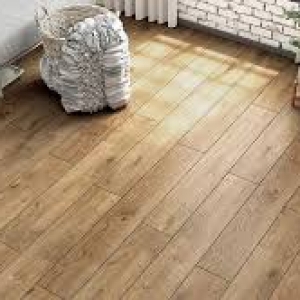When it comes to interior design, small details can make a big impact. Crown molding is one of those architectural elements that instantly enhances the sophistication and elegance of a space. By creating a smooth transition between walls and ceilings, it adds a decorative touch that can completely transform a room’s appearance.
Beyond aesthetics, crown molding serves practical purposes as well. It hides imperfections in walls and ceilings, enhances lighting effects, and increases the overall value of your home. Whether you’re designing a classic, traditional space or a modern, minimalist home, crown molding can be customized to match your style.
In this guide, we’ll explore:
- The different styles and materials of crown molding
- How crown molding enhances home value
- Choosing the right molding for your home
- DIY vs. professional installation
- How to maintain and care for crown molding
If you’re considering crown molding for your home, this guide will help you make the right decision and choose the best materials and styles for your space.
1. What is Crown Molding?
Crown molding is a decorative trim installed at the intersection of walls and ceilings. Historically, it was used in Greek and Roman architecture to add grandeur to buildings. Over the centuries, it became a staple in European homes and was often associated with wealth and luxury.
Today, crown molding is available in a variety of materials and styles, making it accessible and affordable for modern homeowners. It’s a small addition that can make a big impact in any home.
2. Popular Styles of Crown Molding
Crown molding comes in many styles and sizes, allowing homeowners to choose the perfect match for their interiors. Some of the most popular styles include:
Traditional Crown Molding
This style features ornate details and curves, making it ideal for classic and Victorian-style homes.
Modern & Minimalist Molding
With sleek, clean lines, this style is perfect for contemporary homes that favor a minimalist look.
Cove Molding
A simple, curved molding that works well in transitional and modern spaces.
Dentil Molding
Characterized by small, evenly spaced blocks, this molding is often used in historic and Georgian-style homes.
Egg and Dart Molding
This style features alternating oval and arrow patterns, commonly found in luxury residences.
3. Materials Used in Crown Molding
Choosing the right material for crown molding is essential for durability and aesthetics. Here are the most common materials:
Wood Crown Molding
Wood is a high-end material that offers a rich, luxurious look but requires regular maintenance.
MDF is affordable and easy to paint, making it a popular choice for homeowners on a budget.
MDF (Medium-Density Fiberboard)
Polyurethane Molding
This lightweight, moisture-resistant material is perfect for bathrooms and kitchens.
Plaster Molding
Plaster is commonly used in luxury homes due to its ability to hold intricate details, but it is more expensive and fragile.
If you’re unsure which material is best for your space, check out our crown molding options.
4. How Crown Molding Adds Value to Your Home
Crown molding is an investment that can increase your home’s aesthetic and market value. Here’s how:
- Boosts resale value: Homes with crown molding appear more luxurious and well-maintained.
- Makes ceilings look higher: Crown molding draws the eye upward, creating the illusion of height.
- Enhances lighting effects: Certain moldings can be used to accentuate light fixtures or integrate LED lighting for a dramatic effect.
Whether you’re upgrading your home for yourself or preparing it for sale, adding decorative moldings is a smart choice.
5. Installation: DIY vs. Professional Help
While some homeowners choose DIY installation, crown molding requires precision and expertise. Here’s what you should consider:
DIY Installation
- Requires a miter saw, level, caulk, and adhesive
- Works best for small rooms and simple designs
- Mistakes in measuring or cutting can lead to visible gaps
Hiring a Professional
- Ensures perfect alignment and smooth finishes
- Saves time and reduces errors
- Recommended for large rooms or complex molding styles
For a high-quality installation, it’s best to work with experts who specialize in decorative molding.
6. Where to Use Crown Molding in Your Home
Crown molding can be installed in various rooms to enhance aesthetics.
- Living Room: Frames the space beautifully and makes it feel more inviting.
- Dining Room: Adds sophistication and charm to formal gatherings.
- Bedroom: Creates a cozy and polished atmosphere.
- Bathroom: Use moisture-resistant materials like polyurethane for durability.
- Entryway: Crown molding can enhance first impressions by making your entryway look more refined.
To explore different molding styles and finishes, check out our collection here.
7. Maintenance & Care for Crown Molding
To keep your molding looking fresh, follow these maintenance tips:
- Dust regularly to prevent buildup.
- Wipe with mild soap and water for occasional cleaning.
- Inspect for cracks and use caulk to fill gaps.
- Repaint if needed every few years to maintain its pristine appearance.
Proper care ensures that your crown molding remains beautiful and durable for years to come.
Conclusion
Crown molding is one of the easiest ways to elevate your home’s interior design. Whether you’re looking to add elegance, increase home value, or create a refined atmosphere, crown molding is a worthwhile investment.
If you’re ready to enhance your home, explore FMD Distributor’s molding collection for high-quality options that match any style.











